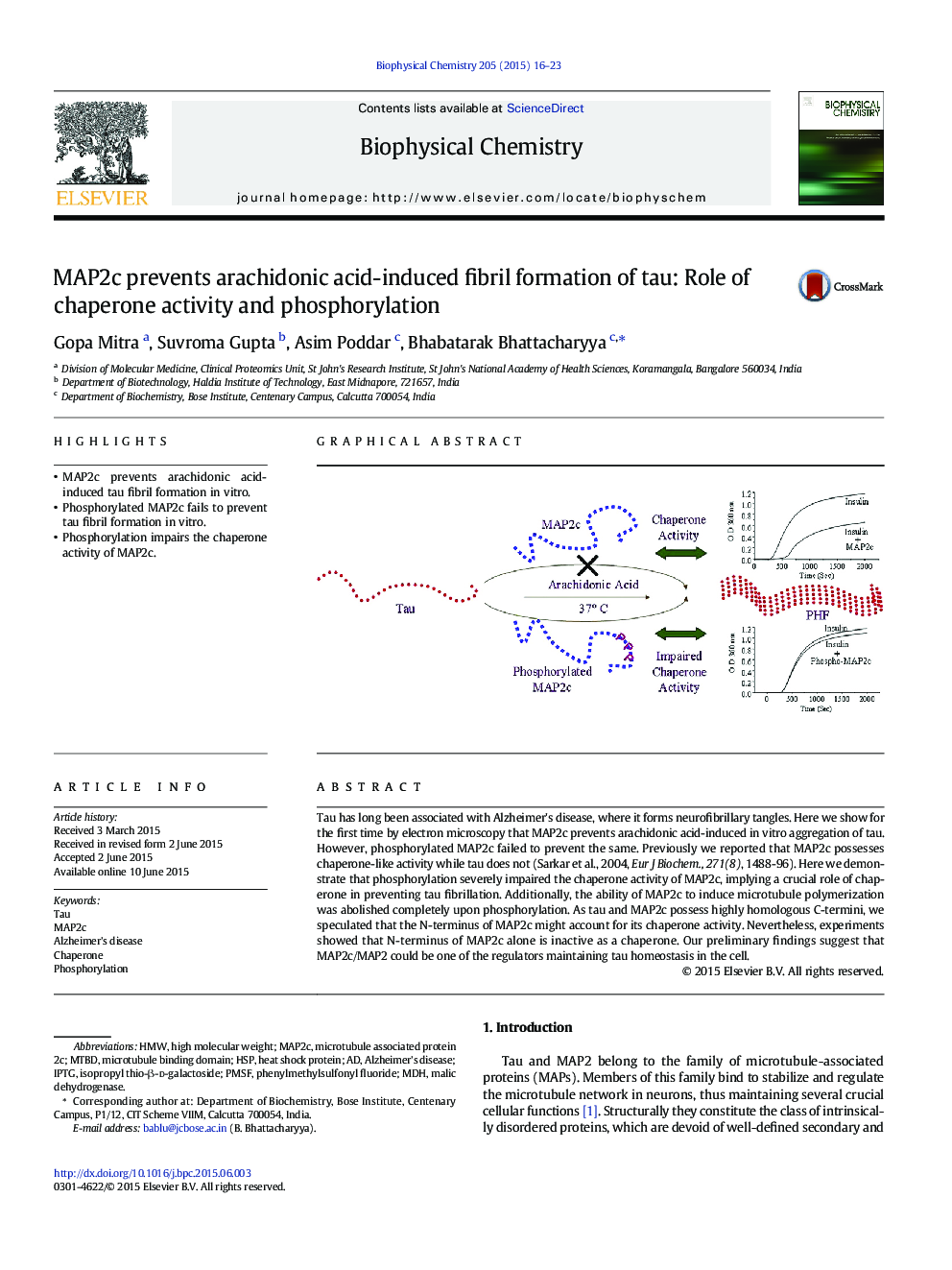| Article ID | Journal | Published Year | Pages | File Type |
|---|---|---|---|---|
| 5370879 | Biophysical Chemistry | 2015 | 8 Pages |
â¢MAP2c prevents arachidonic acid-induced tau fibril formation in vitro.â¢Phosphorylated MAP2c fails to prevent tau fibril formation in vitro.â¢Phosphorylation impairs the chaperone activity of MAP2c.
Tau has long been associated with Alzheimer's disease, where it forms neurofibrillary tangles. Here we show for the first time by electron microscopy that MAP2c prevents arachidonic acid-induced in vitro aggregation of tau. However, phosphorylated MAP2c failed to prevent the same. Previously we reported that MAP2c possesses chaperone-like activity while tau does not (Sarkar et al., 2004, Eur J Biochem., 271(8), 1488-96). Here we demonstrate that phosphorylation severely impaired the chaperone activity of MAP2c, implying a crucial role of chaperone in preventing tau fibrillation. Additionally, the ability of MAP2c to induce microtubule polymerization was abolished completely upon phosphorylation. As tau and MAP2c possess highly homologous C-termini, we speculated that the N-terminus of MAP2c might account for its chaperone activity. Nevertheless, experiments showed that N-terminus of MAP2c alone is inactive as a chaperone. Our preliminary findings suggest that MAP2c/MAP2 could be one of the regulators maintaining tau homeostasis in the cell.
Graphical abstractDownload full-size image
